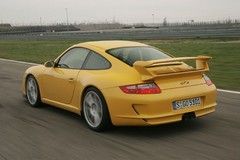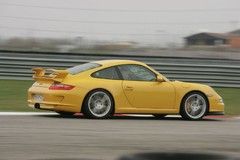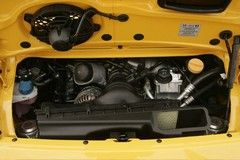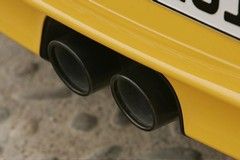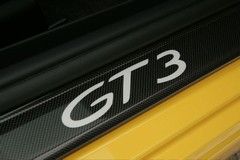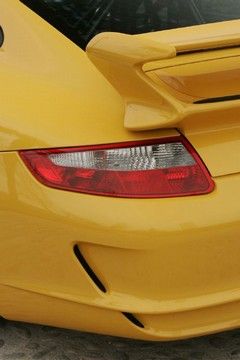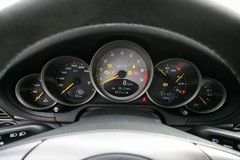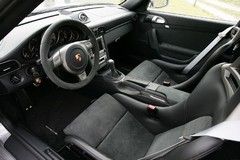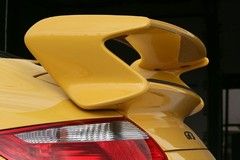Porsche GT3 (997)
Has Porsche managed to pull ahead of its Italian rivals? Ian Kuah thinks so.
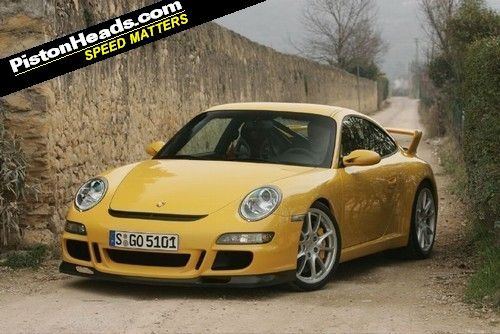
Porsche GT3 (997)
The gloss on any new model only lasts until the next best thing comes along, and Porsches are no exception to this rule. Even before the latest 997-based Porsche GT3 hits the showrooms in May, 996 GT3 owners are already cringing at the depreciation their cars have suffered in the last few months, and even the mighty GT3 RS has not been spared.
Money apart however, the burning question on everyone’s lips is “Is the new GT3 just incrementally better or is it a significant step forwards?” I'll put you out of your misery right now and state unequivocally that the new car puts clear blue sky between itself, its predecessors and the more ostentatious rivals from Italy.
Uncharted territory
More than just being faster and better handling than before, the new GT3 also opens previously uncharted territory for a track-biased sportscar in being the first Porsche wearing a GT or RS badge to actually have a comfortable ride.
Comfortable is of course a relative term, and while a limousine-like ride will never be on the cards for any car wearing the Porsche crest, the new PASM system that the race engineers at Weissach have adapted for the GT3 gives it a supple secondary ride that takes the edge off short, sharp bumps.
At higher speeds, the primary ride is similarly well damped, with the sort of compliance that you would expect from a heavier sports saloon like a BMW M5.
Yet when you start to push the car hard on the road or track, the damper control, roll-free cornering and instant response that you would expect is all there.
It is no secret that we not big fans of PASM as issued with the 997 Carrera S. While it confers a relatively smooth ride in everyday driving, Sport mode is way too hard for road use, and can make the back end skip sideways over short, sharp bumps encountered mid-corner.
Our eyebrows went up when we heard that the new GT3 was PASM-equipped, but the engineers at Weissach have a very different viewpoint from their colleagues at Zuffenhausen. So while the operating principles of the GT3’s PASM system may be similar, its settings differ by a country mile.
Just an everyday car
So despite having a much lower ride height and stiffer settings, the GT3 ends up being relatively comfortable enough to use everyday, not something we would have said about its predecessors.
As expected, the suspension has been comprehensively revised over the 996 GT3 Mk 2s, with new uprights, top mounts, bushes and other components in addition to new geometry to ensure that the front suspension arms stay geometrically purer throughout their arc of movement.
Lightweight 8.5J and 12J x 19-inch alloys are wrapped in either Michelin Pilot Sport Cup or Pirelli P Zero Corsa trackday rubber. These are not off-the-shelf tyres, but have been specially developed for the new GT3 and enable it to pull a stunning 1.4g lateral acceleration in the dry.
They are still vulnerable to aquaplaning because of their shallower tread depth, but on a plain wet road without big puddles, their grip is now no worse than a normal road tyre whose tread has been worn to a similar depth.
Engine and handling
The engine is still based on the same GT1 block as before, but the connecting rods are longer to reduce the thrust angle. Married to shorter, lightweight pistons, the new set-up runs a 12.0:1 compression ratio. Together with a new variable length intake manifold, a larger volume but much lighter exhaust system with lower back-pressure, the 3,600cc motor now makes 415bhp at 7,600rpm with 298lb-ft of torque at 5,500rpm. The rev limiter kicks in at a screaming 8,400rpm.
Despite its high-revving nature, the motor is eminently tractable, and you can potter around town in third at 30mph and then pull away crisply and smoothly. Thanks to advanced digital motor electronics and variable valve timing, this is the friendly face of the modern supercar.
High revs and a relatively high kerb weight might seem to be a performance denting formula, but the revised motor does not seem to agree. The 0-62 mph time of 4.3 sec is expected for this type of car, but the 0-100mph time of 8.7 sec is blindingly fast.
If you recall that the bi-turbo Ruf CTR Yellow Bird with around 500bhp and just 1,200kg to pull does it in 7.3 sec, you have a context, but then the sticky new rubber on the GT3, its clever new limited slip differential and its close ratio six-speed gearbox help. Such is progress.
On the way to driver stimulating speeds, the new intake and exhaust systems create an amazing soundtrack. From the inside, it is all the 911 noises you have ever enjoyed, overlaid by the primal scream of a semi-race motor. And yet from the outside, this car passes all the latest EU drive-by noise regulations.
Top speed is 192mph, and we did manage an indicated 188mph on the Italian Autostrada before we ran out of straight. At very high speeds, the new GT3 is unerringly stable and feels very planted thanks to the aerodynamic tweaks. Despite body stiffening for both handling and safety reasons, thanks to the new alloy bonnet and doors shared with the new Turbo, weight increase is a mere 15kg to 1,395kg and the Cd is a creditable 0.29.
On the race track, the GT3 really comes alive. We used the Adria Raceway in Northern Italy as a safe haven to find the car's limits, and came away suitably impressed.
Turn-in on the Michelin Cup tyres is awesome. In situations where you would expect understeer on street tyres, the sticky rubber endows the front end with amazing grip. Through the coned slalom test that Porsche set up for us, the front end grip was beyond what we are used to on a 911 set up on anything other than slicks.
The front end would simply go where we pointed it, and the tyres also dramatically enhance the braking ability of the PCCB anchors, conferring levels of retardation similar to that of race cars of a decade ago. Where normal street tyres would be screaming in protest, approaching the very high limit of adhesion in a bend produces chirping noises from the Cup tyres.
Sticky tyres or not, the new motor has the grunt to unhinge the back end at will, even on a dry track and, despite this and the weight of the motor over the rear wheels, you still need to apply power progressively on the exit from a bend, in second gear.
That said, the limited slip diff works remarkably well, and if you switch the PSM traction control off, power slides are progressive and controllable so long as you know what you are doing.
Worthy successor
So there you have it. The new GT3 is more than a worthy successor to the great cars that have proudly worn this badge before. But it adds one critical dimension to the performance envelope that we had not expected.
Assuming that it would be superior to its predecessor on the track, we were stunned that it is more comfortable on the road as well. Those clever engineers at Weissach have done it again, and how.
Gassing Station | Porsche General | Top of Page | What's New | My Stuff


